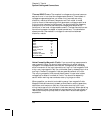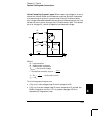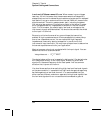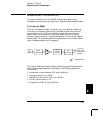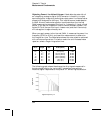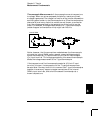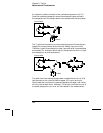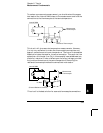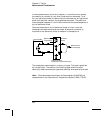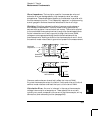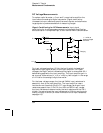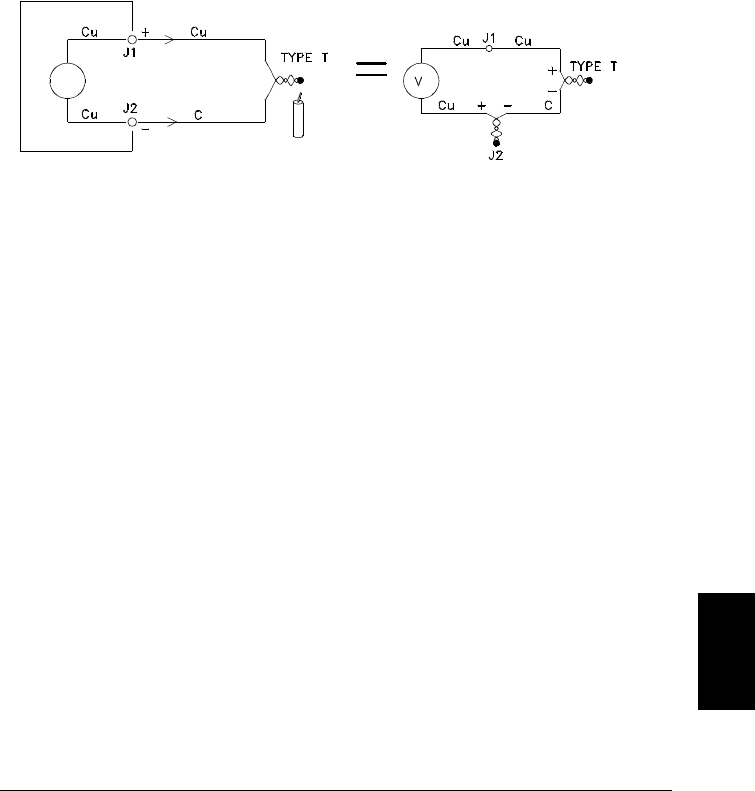
Thermocouple Measurements A thermocouple converts temperature
to voltage. When two wires composed of dissimilar metals are joined,
a voltage is generated. The voltage is a function of the junction temperature
and the types of metals in the thermocouple wire. Since the temperature
characteristics of many dissimilar metals are well known, a conversion
from the voltage generated to the temperature of the junction can be
made. For example, a voltage measurement of a T-type thermocouple
(made of copper and constantan wire) might look like this:
Notice, however, that the connections made between the thermocouple
wire and the internal
DMM make a second, unwanted thermocouple
where the constantan (C) lead connects to the internal
DMM’s copper
(Cu) input terminal. The voltage generated by this second thermocouple
affects the voltage measurement of the T-type thermocouple.
If the temperature of the thermocouple created at J2 (the
LO input
terminal) is known, the temperature of the T-type thermocouple can
be calculated. One way to do this is to connect two T-type thermocouples
together to create only copper-to-copper connections at the internal
DMM’s input terminals, and to hold the second thermocouple at a
known temperature.
Internal DMM
8
Chapter 8 Tutorial
Measurement Fundamentals
347




